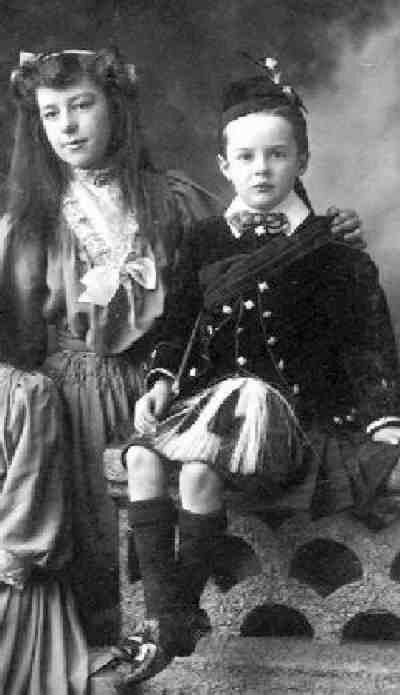

Figure 1.--This postcard portrait is British. We assume that it is Scottish, but we have no way of knowing for sure. Note the Highland regalia and Eton collar. The image is undated, but as it was a postcard portrait, we believe that it probably dates to the 1900s. Image coutesey of BM collection.
|
|
Scottish Kilts Chronology: The 1900s
We continue to note portrits from Britain in the 1900s dressed in kilts. Most of the images we have are formal portraits. We have little information at this time as to what extent Scottish boys wore kilts for school or informal play after school. Unfortunately many are unidentified. We assume most are Scottish boys, but as mentioned above some boys may have also worn them south of the border, especially by boys of Scottish ancestry. The sons of George V are often pictured in kilts. He considered the kilt and sailor suit as the only suitable clothing for children. We do not know to what extent some English boys may have been dressed in kilts. They would have been likely to have been boys from aristocratic or wealthy families. The kilt was adopted by the new Scout movement in Scotland. Scottish Scouts wore kilts rather than short trousers. Prince George took a personal interest in the children's clothing. We continue to note portraits from Britain of the young princes dressed in kilts during the 1900s.
Portraits
We continue to note portrits from Britain in the 1900s dressed in kilts. Almost all of these portraits we have found are formal portraits. THe boys are dressed in full Highland regalia. Unfortunately many are unidentified so we can only guess at the date and nationality.
Conventions
While the available portraits clearly show that boys dressed up in kilts for formal occassions, we know less about the extent Scottish boys wore kilts for other than formal occassions. We have little information at this time as to what extent Scottish boys wore kilts for school or informal play after school.
The impact of social class and the wearing of kilts appears varied. The available portraits clearly show that Scottish boys from affluent families clearly wore kilts for formal occassions. We are less sure if the wore them to school or for everydaywear. We know less about to what extent less affluent boys wore kilts, especially boys from working class families. This is is in part because they were less likely to have formal portraits taken. We have noted boy ib the Higlands (northern Scotland) wearing cery plain kilts without the dress trimmings. We note crofters children going to school in their bare feet, someone wearing trousers, others kilts. We think this was much less common in the Lowlands ahd Scottish cities. Our image, however, is still very limited so we are not yet able to make a full assessment. Hopefully Scottish readers will be able to provide mpre information on this topic.
Prince George took a personal interest in the children's clothing. We continue to note portraits from Britain of the young princes dressed in kilts during the 1900s. As the boys got older, King George would increasingly have them outfitted them in kilts
and leave very careful instructions about which kilt they should wear for different
occassions and activities. Again I am not sure what Queen Mary thought of this. Being
Danish she probably was not used to the style, but again she deferred to the King's
wishes. They children always wore kilts while on trips to Scotland, but there were
occasiond for kilts in England as well. While both older and younger boys wore kilts,
there were subtle differences. As younger boys they wore Eton collars and military-style
jackets.
Nationality
We assume most are Scottish boys, but as mentioned above some boys may have also worn them south of the border, especially by boys of Scottish ancestry. The sons of George V are often pictured in kilts. He considered the kilt and sailor suit as the only suitable clothing for children. We do not know to what extent some English boys may have been dressed in kilts. They would have been likely to have been boys from aristocratic or wealthy families.
Styles
Scottish kilts as they usually are outfits with Higland regalia. AS a result many of the styles are fairly constant over time. There are some elements that changed over time. The most obvious was the Eton collar. Few boys in the 1900s wore their formal kilt outfits without the required Eton collar, with or without a bow tie.
Scouts
The kilt was adopted by the new Scout movement in Scotland. Scottish Scouts wore kilts rather than short trousers.
HBC

Navigate the Boys' Historical Clothing Web Site:
[Return to the Main Scottish kilt chronology page]
[Return to the Main kilt page]
[Introduction]
[Activities]
[Biographies]
[Chronology]
[Cloth and textiles]
[Clothing styles]
[Countries]
[Topics]
[Bibliographies]
[Contributions]
[FAQs]
[Glossaries]
[Images]
[Links]
[Registration]
[Tools]
[Boys' Clothing Home]
Created: August 5, 2001
Last updated: 7:03 PM 10/2/2008



